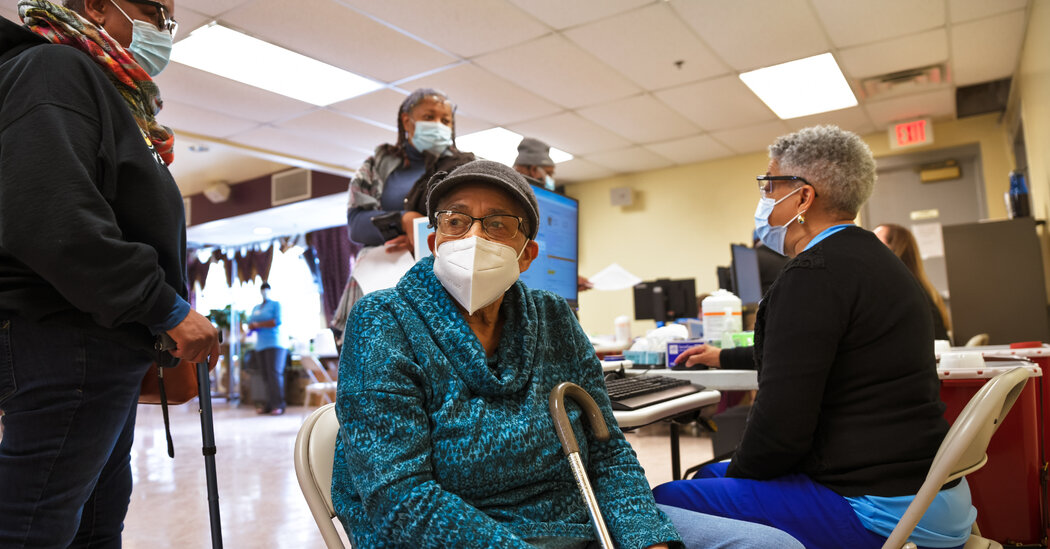Rates of vaccination in communities of color in New York are lower than rates in largely white communities, new data shows, the latest evidence that suggests Black and brown Americans aren’t getting equal access to vaccines, even though low-income communities of color remain the hardest hit by the coronavirus.
The picture is hazy because accurate national data on race and ethnicity is lagging. But experts and leaders in these communities say the data shows that Black and Latino Americans are being vaccinated at lower rates because they face obstacles like language and technology barriers, disparities in access to medical facilities and getting to a site.
Communities of color face other problems, too, including social media misinformation and hesitancy to get the vaccine because of mistrust in government officials and doctors.
On Tuesday, officials in New York City released new data on the city’s vaccination effort by ZIP codes, showing that 1.3 million vaccine doses have been administered, and exposing discrepancies in vaccinating communities of color. That data does not break down recipients by race in each ZIP code, but New York State provides racial figures in vaccination totals, updated frequently, which also show stark differences in vaccination rates for Latino and Black residents.
President Biden has repeatedly said that racial equity is at the center of his response to the coronavirus pandemic and he appointed an adviser, Dr. Marcella Nunez-Smith, to tackle that. The Biden administration announced a program last week that began to ship vaccines to federally funded clinics in underserved communities.
The federal government also sent one million doses to about 6,500 retail pharmacies beginning last week. But researchers who did a county-level analysis, which included community pharmacies, federally qualified health centers, hospital outpatient departments and rural health clinics, found that more than a one-third of U.S. counties have two or fewer of those facilities.
This makes access to vaccines more difficult, according to the study from the University of Pittsburgh School of Pharmacy and West Health Policy Center.
While vaccine hesitancy may play a role in communities of color, Sean Dickson, the director of health policy at the West Health Policy Center, said that the study shows evidence of effects from systemic health infrastructure issues.
“It’s important that we don’t rest on vaccine hesitancy as a crutch,” Mr. Dickson said, adding that it could sometimes be used to blame minority communities. “If we don’t do anything to better affirmatively distribute the vaccines in these communities, then it will become a self-fulfilling prophecy.”
In the Brownsville area of Brooklyn, Renee Muir, the director of development and community relations at the BMS Family Health Center, said she is developing a survey to gather evidence of the challenges affecting the community. Many residents have been deeply affected by the virus because of adverse health conditions and unemployment.
“Now you’re talking about people making decisions to spend $6 round trip, or eating, or paying a phone bill,” Ms. Muir said about residents traveling to get a vaccine.
On messaging platforms like WhatsApp and on social media, Latinos have been exposed to vaccine misinformation, said Dr. Valeria Daniela Lucio Cantos, an infectious disease specialist at Emory University. She has been working to help Latinos understand the vaccine and make appointments.
“There’s this emphasis on the risk and not enough on the benefits of the vaccines,” she said.
But while many older Americans struggle with the online system to register for a vaccine, sites only available in English presented an additional barrier, Dr. Cantos said.
“It feels like the system built for vaccine distribution did not have the Latinx community in mind,” she said, using the gender-neutral term for Latinos. She added that vaccine sites asking for Social Security numbers or insurance numbers made it difficult for undocumented immigrants to feel safe.
As vaccine supplies ramp up, Dr. Paulina Rebolledo, an assistant professor at Emory, hopes that officials begin to rethink their approach by mobilizing with organizations within communities of color that are trusted by residents and speak various languages.
“We, on the provider side or the health care side, can try to do more to reach patients and have them hear our voices,” she said. “It’s their overall health we’re trying to work on, and this is just an integral part of the movement.”
Source: Read Full Article





